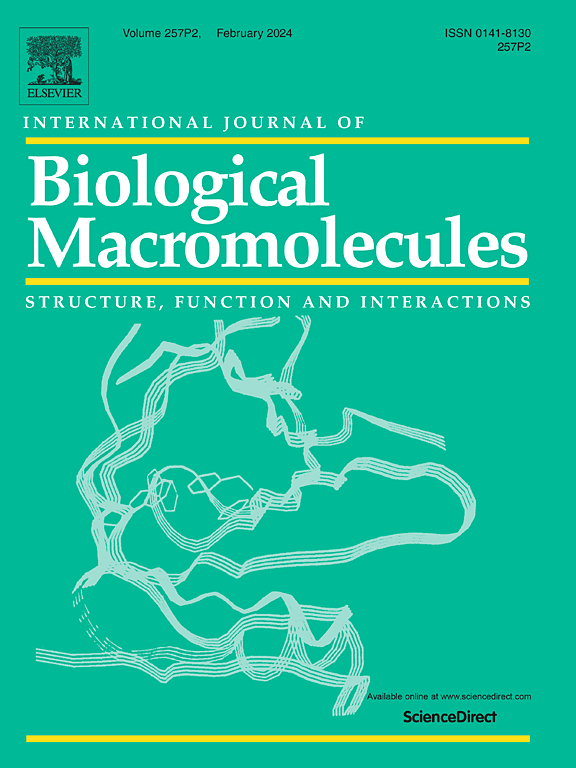Construction of an interpenetrating polymer network in situ to develop multifunctional cellulose nanofiber-enhanced films with superior mechanical performances
IF 8.5
1区 化学
Q1 BIOCHEMISTRY & MOLECULAR BIOLOGY
International Journal of Biological Macromolecules
Pub Date : 2025-02-10
DOI:10.1016/j.ijbiomac.2025.140857
引用次数: 0
Abstract
The development of biodegradable films with enhanced mechanical performance is of great importance for environmental concerns. Inspired by the unique multiple hydrogen bonding of spider silk, in this work, we developed a tough polyvinyl alcohol (PVA)-based, TEMPO-oxidized cellulose nanofibers (TOCNF)-enhanced film with outstanding stretchability, mechanical strength, fatigue resistance, and biodegradability by constructing an interpenetrating polymer network (IPN) with abundant hydrogen bonds via a combination of in situ radical-crosslinking and solvent casting method. The film incorporated 1 wt% of TOCNF, namely P/A-TCF1, exhibits excellent biodegradability, outstanding elongation (470 %), significant toughness (143 MJ/m3), healable efficiency (90 %) and high tensile strength (45 MPa), surpassing the performance of a vast of commercially-available films. Importantly, the P/A-TCF1 film can withstand 5000 actual 180° folds without causing any structural damage, and the tensile strength remains almost 90 % of its original value. This strategy provides a novel approach for exploring exceptional fold-resistant films.
原位构建互穿聚合物网络,开发具有优异机械性能的多功能纤维素纳米纤维增强膜
开发具有增强机械性能的生物可降解薄膜对环境问题具有重要意义。受蜘蛛丝独特的多重氢键的启发,本研究通过原位自由基交联和溶剂铸造相结合的方法,构建具有丰富氢键的互穿聚合物网络(IPN),开发了一种坚韧的聚乙烯醇(PVA)基、tempo氧化纤维素纳米纤维(TOCNF)增强膜,具有出色的拉伸性、机械强度、抗疲劳性和生物降解性。该薄膜含有1 wt%的TOCNF,即P/ a - tcf1,具有优异的生物可降解性,突出的伸长率(470%),显著的韧性(143 MJ/m3),可愈合效率(90%)和高拉伸强度(45 MPa),超过了大量商用薄膜的性能。重要的是,P/A-TCF1薄膜可以承受5000次实际180°折叠而不会造成任何结构损坏,抗拉强度保持在原始值的近90%。这种策略为探索特殊的抗折叠薄膜提供了一种新的方法。
本文章由计算机程序翻译,如有差异,请以英文原文为准。
求助全文
约1分钟内获得全文
求助全文
来源期刊
CiteScore
13.70
自引率
9.80%
发文量
2728
审稿时长
64 days
期刊介绍:
The International Journal of Biological Macromolecules is a well-established international journal dedicated to research on the chemical and biological aspects of natural macromolecules. Focusing on proteins, macromolecular carbohydrates, glycoproteins, proteoglycans, lignins, biological poly-acids, and nucleic acids, the journal presents the latest findings in molecular structure, properties, biological activities, interactions, modifications, and functional properties. Papers must offer new and novel insights, encompassing related model systems, structural conformational studies, theoretical developments, and analytical techniques. Each paper is required to primarily focus on at least one named biological macromolecule, reflected in the title, abstract, and text.

 求助内容:
求助内容: 应助结果提醒方式:
应助结果提醒方式:


